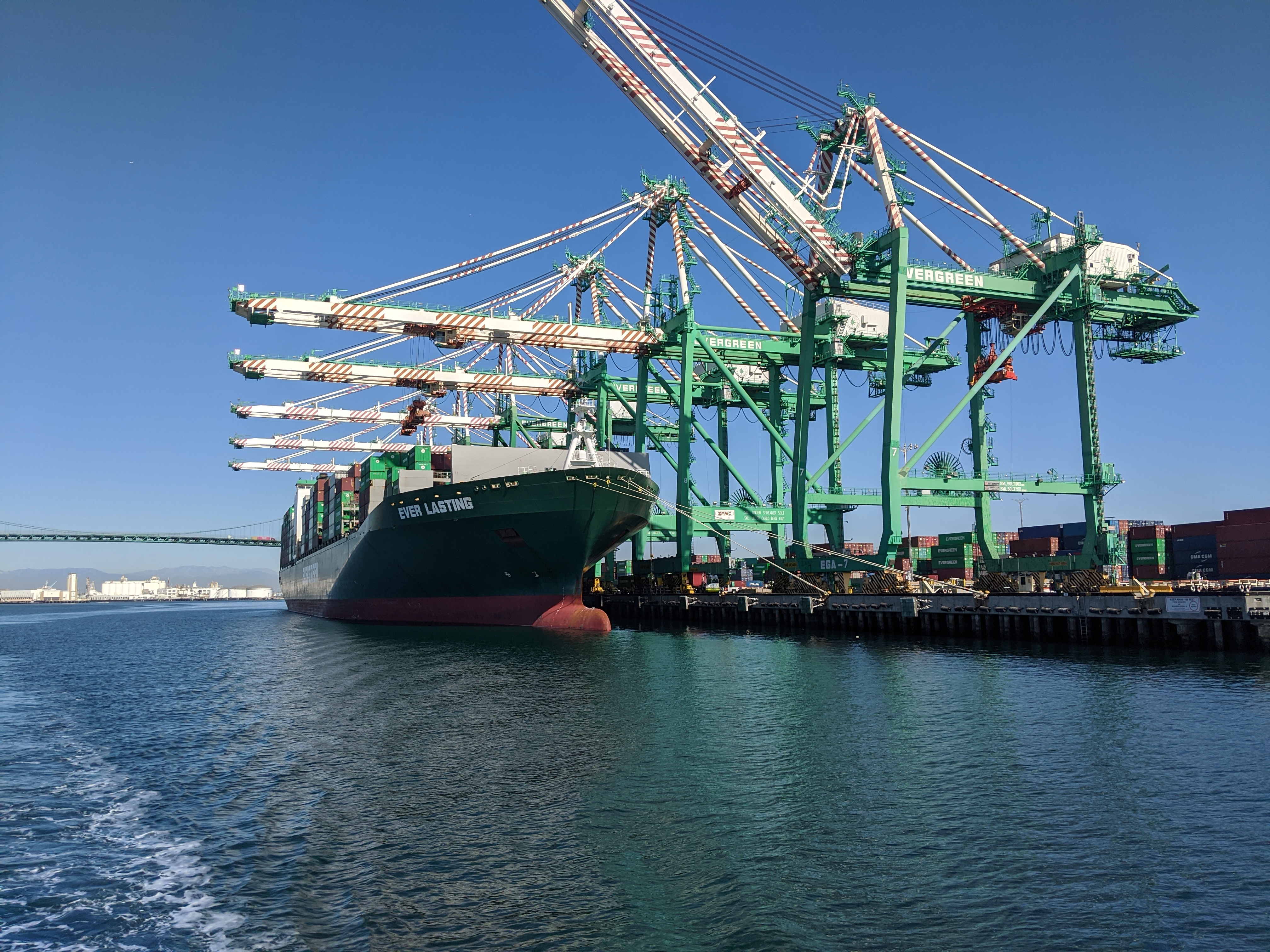News | USC, LBSU Students Tour Port of Los Angeles
Stop the VideoNews

USC, LBSU Students Tour Port of Los Angeles
Saturday, February 1, 2020
by Ryan Hund, Master of Urban Planning (MUP), USC
Students and faculty from the University of Southern California (USC) and Long Beach State University (LBSU), along with staff and transportation professionals, were treated to a guided, educational tour of the Los Angeles Harbor on Friday, November 9, 2019. Sponsored by METRANS and part of the Port of Los Angeles’s School Boat Tour, the excursion allows participants an up-close and personal port experience, and the ability to see firsthand the workings and local impacts of global trade.

The combined Port of Los Angeles/Port of Long Beach complex is the largest container port in the United States. Specifically touring the Port of Los Angeles, among many things participants learned how longshoremen use cranes to unload standard 40-foot containers, each weighing up to thirty-five tons, at an impressive rate of thirty containers per hour. The containers, which contain goods ranging from food to cars, are then loaded onto trucks or trains for travel to their final destination. Tour participants were able to see a unique and close-up view of this process as the tour boat skirted around the many thousand-foot container ships docked at the port.

The Port of Los Angeles also serves other functions not related to commercial shipping. Students saw the Coast Guard and Los Angeles Fire Department boat terminals, and learned how these public services support the essential work of the port. They also saw the Catalina Express ferry terminal and the World Cruise terminal. Tour guides explained the impact of marine transportation on both tourism and the provision of essential services to California’s outlying islands.
The Port region isn’t only home to humans. LBSU engineering student Erica Harris particularly appreciated witnessing the interaction between engineering and nature, and how they coexist. “I liked how the sea lions were all over the place,” remarked Harris. The tour boat took students past a navigation buoy that plays an important role in the natural environment as a hauling-out spot for California sea lions.
Guides explained the history of cargo shipping, pointing out older ships and buildings that were made obsolete by the advent of containerized shipping in the 1950s. The harbor’s history as a military base was also highlighted as the tour boat cruised past the former battleship USS Iowa (BB-61), now a permanently-anchored museum display.
At the conclusion of the hour-long tour, the boat returned to its berth and students returned to their studies with a new firsthand appreciation of the importance of the Port of Los Angeles to the regional and global economy.
News Archive
- December (1)
- November (6)
- October (4)
- September (2)
- August (3)
- July (4)
- June (3)
- May (7)
- April (8)
- March (11)
- February (8)
- January (7)
- December (7)
- November (8)
- October (11)
- September (11)
- August (4)
- July (10)
- June (9)
- May (2)
- April (12)
- March (8)
- February (7)
- January (11)
- December (11)
- November (5)
- October (16)
- September (7)
- August (5)
- July (13)
- June (5)
- May (5)
- April (7)
- March (5)
- February (3)
- January (4)
- December (4)
- November (5)
- October (5)
- September (4)
- August (4)
- July (6)
- June (8)
- May (4)
- April (6)
- March (6)
- February (7)
- January (7)
- December (8)
- November (8)
- October (8)
- September (15)
- August (5)
- July (6)
- June (7)
- May (5)
- April (8)
- March (7)
- February (10)
- January (12)















